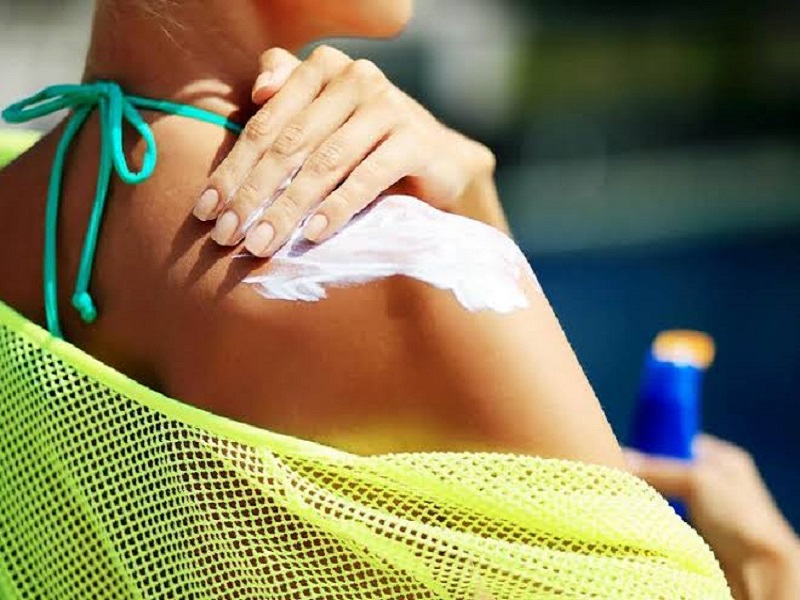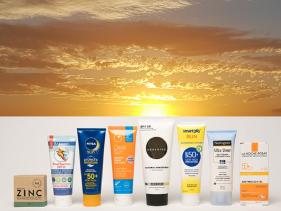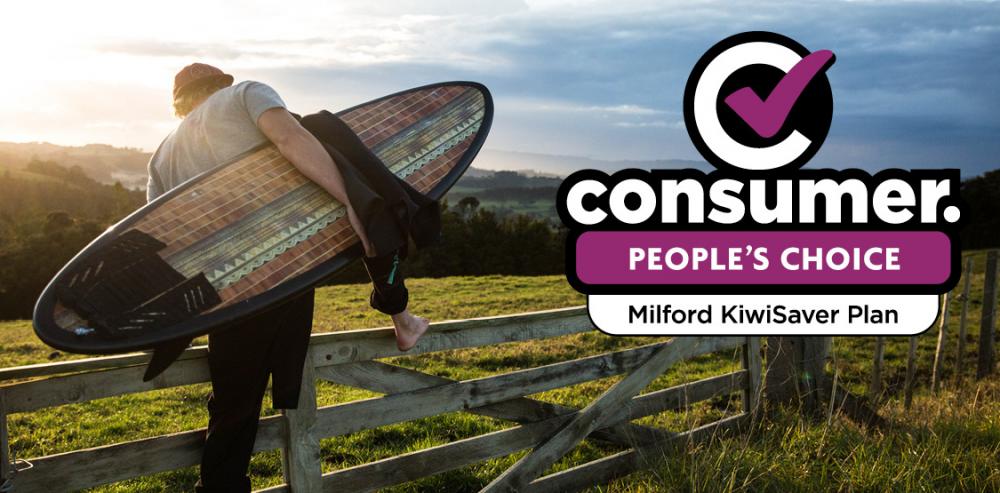
Click Here For the Sunscreen Report and Which Brands Passed.
Benefits of joining Consumer
Call our advice line
If you’re a paying member, our expert advisers can explain your rights and help resolve the issue.
Get in touch.
Nearly half the sunscreens in our latest test didn’t provide the claimed protection. A further three products failed the broad spectrum requirement.
- Nine of 20 sunscreens we tested didn’t meet the SPF claimed on the label.
- Three products also failed to meet requirements for broad-spectrum protection.
- Just eight sunscreens met their label claims. They ranged in price from $7.20/100ml to $64/100ml.
- It’s time the government made the sunscreen standard mandatory. In a country with one of the highest rates of skin cancer in the world, a voluntary standard isn't good enough.
We tested 20 sunscreens to assess whether they met their SPF (sun protection factor) and broad-spectrum protection claims.
Nine products didn’t meet the SPF claimed on the label:
- Hawaiian Tropic Silk Hydration Sunscreen Lotion SPF50+ A Touch of Mango and Papaya
- Invisible Zinc Face + Body Mineral Sunscreen SPF50
- Natio Suncare Moisturising Sun Lotion SPF50+
- Frankie Apothecary Natural Sunscreen + Kawakawa and Antioxidant SPF50
- MooGoo Natural Sunscreen SPF40
- Cancer Society Everyday Sun Lotion SPF50+
- Marine Blue Australia Dry Touch Sunscreen Lotion SPF50+
- Sunsense Ultra SPF50+
- Banana Boat Dry Balance Sunscreen Lotion SPF50+

We tested two samples of Cancer Society Everyday Sun Lotion SPF50+ at two different labs. The first sample returned an SPF of 28.29 and the second sample achieved 30.6. Both tested at significantly below the SPF60 required to make an SPF50+ claim.
Earlier this year the Cancer Society made a commitment to re-test all its sunscreens (except aerosols) before this summer. Results provided to us report the product we tested had an SPF of 63.8.
The Cancer Society’s test results were from AMA Laboratories – a sunscreen-testing facility in the US. In August 2019, the Food and Drug Administration (FDA) announced AMA’s owner had been charged with, and some staff had pleaded guilty to, falsifying test results from 1987 to April 2017 (see “AMA Labs”).
As a result of our test, the Cancer Society said it’s voluntarily withdrawing the batch we tested (batch 89661). However, given the fact the sunscreen didn’t meet its claims in the two separate tests we did, we’d expect the Cancer Society to recall and relabel all batches.

Sunsense Ultra SPF50+ and Banana Boat Dry Balance Sunscreen Lotion SPF50+ only provided moderate protection. The distributors of Sunsense provided us with test results showing the sunscreen had been tested on 10 human subjects and met its claimed SPF. However, the test certificate was from 2016 and, like the Cancer Society, testing was undertaken by AMA Labs.
The distributors of Banana Boat provided 10-person test results from 2015/2016 but wouldn’t tell us the lab that did the testing. It said testing was completed by a US-lab but wouldn’t disclose the lab’s name. In our 2018 test, Banana Boat provided a test report from AMA Labs.
The distributors of Banana Boat also sell Hawaiian Tropic Silk Hydration Sunscreen Lotion SPF50+ A Touch of Mango and Papaya. In our test, it had an SPF of 48.68, not the SPF60 required to make an SPF50+ claim. The 2016 test report provided by the company was also from an unidentified lab.
Marine Blue Australia Dry Touch Sunscreen Lotion SPF50+ only provided moderate protection, with a tested SPF of 26.4. The distributor didn’t provide a test certificate to support its claim. It said previous test results, also undertaken by AMA Labs, showed it met its label claim.
Marine Blue is subsidised by Pharmac for people severely sensitive to light as a result of a clinical condition. Pharmac doesn’t undertake testing or require companies to provide test certificates to ensure subsidised sunscreens meet claims. We think Marine Blue should be removed from the Pharmaceutical Schedule. We’ve sent our results to Pharmac.
MooGoo Natural Sunscreen SPF40 achieved an SPF of 38.42 in our test – just short of its SPF40 claim. The company provided us with a supporting 10-person report from 2014 and a 2019 three-person report from the Australian lab we used.

Frankie Apothecary Natural Sunscreen + Kawakawa and Antioxidant SPF50 provided high protection (SPF38.42), but fell shy of its label claim. To support its label claim, the company provided a 2017 10-subject report from the Australian lab we used.
Frankie Apothecary director Matt Elvin said he’s disappointed our result showed the sunscreen wasn’t measuring up to its SPF50 claim. As the new owner of the brand, Mr Elvin said he relied on the 2017 report from the previous owner. “The sunscreen formula has not changed so we are working with the manufacturer to determine the cause of the drop in SPF,” he said. As a result of our test, Frankie Apothecary has commissioned further testing of this product. In the meantime, the company is relabelling current and new product with an SPF35 label. It has also committed to annual testing.
Sunscreen manufacturers don’t have to regularly test their products but we think they should to ensure different batches meet label claims. Lack of consistency between batches is especially an issue for sunscreens containing zinc oxide and titanium dioxide as seen in the MooGoo and Frankie Apothecary results.
Invisible Zinc Face + Body Mineral Sunscreen SPF50 and Natio Suncare Moisturising Sun Lotion SPF50+ also failed to meet their SPF claims in our test. Both companies told us their products were backed by test results, but declined to provide a test certificate.

Beauty Care Co Zinc Sport Sunscreen Lotion SPF50+, Surf Life Saving Sunscreen Lotion Dry Touch Formula SPF50 and Wotnot Deeply Moisturising Sunscreen SPF30 met their SPF label claims. However, all failed one of the broad-spectrum requirements.
Surf Life Saving provided a certificate from 2012 to support its broad spectrum claim. It told us it is working with the manufacturer to review our test result. Wotnot is also following up with its manufacturer. Beauty Care Co didn’t respond to our inquiries.
Our results aren’t a one-off. Last year, only three (out of 19) sunscreens in our test met their SPF label claim and requirements for broad spectrum. In 2017, only nine (out of 20) achieved this.
Up to standard
Just eight of the 20 sunscreens we tested met their SPF label claim and the requirements for broad-spectrum protection. Prices ranged from $7.20 per 100ml (Smart365 Sun Sunscreen Lotion SPF50+ from The Warehouse) to $64 per 100ml (La Roche-Posay Anthelios XL Ultra-Light Fluid 50+).
These sunscreens met their SPF label claim and passed the broad spectrum test: 
- La Roche-Posay Anthelios XL Ultra-Light Fluid SPF50+
- Neutrogena Ultra Sheer Dry-Touch Sunscreen Lotion SPF50+
- Nivea Sun Protect & Moisture Moisturising Sunscreen Lotion SPF50+
- Smart365 Sun Sunscreen Lotion SPF50+
- Oasis Sun Sport PA++++ SPF40
- Badger Sport Unscented Natural Mineral Sunscreen Cream SPF35
- My Sunshine Natural Sunscreen + Antioxidants SPF30
- Solzinc Natural Sun Protection 30+
AMA Labs
In August, Gabriel Letizia Jr., the owner of AMA Laboratories, was arrested on charges of fraud for reporting false test results from 1987 to April 2017 – a period of 30 years.
It was alleged the company tested products on a lower number of subjects than was reported. It’s also alleged AMA staff made false and misleading statements about the test results to companies.
The charges were made by the United States Federal Bureau of Investigation (FBI) and Food and Drug Administration (FDA). The US Attorney alleges the fraud cost the company’s clients millions and also endangered the safety of thousands of consumers. The owner is defending the charges. However, four of AMA’s staff, including its technical director and clinical laboratory director, have pleaded guilty.
For many years, companies have been sending us AMA test results that conflict with our tests. We think sunscreen companies that have been relying on AMA results to substantiate label claims need to urgently re-test all their sunscreens at a different lab to ensure products are providing the claimed protection.
Time to regulate
In April, we made a submission to the Ministry of Health on the Therapeutic Products Regulatory Scheme. We strongly supported sunscreens being included as a therapeutic product and required to comply with the Australian and New Zealand sunscreen standard.
The sunscreen standard is mandatory in Australia but voluntary here (where sunscreens are classified as cosmetics). Products that meet other international standards, such as those in the US or EU, are also allowed to be sold as well as sunscreens that don’t meet any standard at all.
We also asked for regulations to specify how often sunscreens must be tested and include requirements for test labs. In addition, monitoring and independent testing of sunscreens must be done to ensure label claims are truthful.
We’ve been campaigning for a mandatory sunscreen standard for many years. In a country with one of the highest rates of skin cancer and melanoma in the world, it’s not good enough sunscreens aren’t regulated. Experts agree. The New Zealand Dermatological Society and Skin Cancer College Australasia support our campaign for regulation.
What’s in them?
In summer, it’s important to slap on sunscreen to protect you from UV rays. The sun exposes you to two types of UV rays – UVA and UVB. UVA penetrates deeply into the skin and can cause wrinkles and age spots. UVB causes skin reddening and is the main cause of sunburn. Both rays can cause skin cancer.
Sunscreen active ingredients can be divided into two groups – physical blockers and chemical absorbers.
Physical blockers (zinc oxide and titanium dioxide) work by reflecting or scattering UV radiation and are effective at protecting against both UVA and UVB radiation. A downside is they leave white marks on the skin, although some physical sunscreens now use nanoparticles – tiny molecules with one or more dimension less than 100 nanometres (nm) – which makes the sunscreen transparent.
There is debate about the safety of nanoparticles and whether they can penetrate the outer layer of skin (which has been shown in lab studies) and damage living cells.

There is debate about the safety of nanoparticles and whether they can penetrate the outer layer of skin.
In January 2017, the Australian Therapeutic Goods Administration updated its review on the safety of zinc oxide and titanium oxide nanoparticles. The review looked at both in vitro (studies on skin cells) and in vivo (studies on humans and animals). It concluded the majority of studies found nanoparticles didn’t penetrate “or minimally penetrated” the skin, suggesting “systemic absorption, hence toxicity, is highly unlikely”.
The European Commission concluded available evidence suggests zinc oxide and titanium dioxide nanoparticles can be considered safe for use on the skin as sunscreens up to a concentration of 25%. This does not apply to sprayable products, which might be inhaled.
With cosmetic products, which include sunscreens, nanoparticle ingredients are required to be labelled. The word “nano” must appear in brackets after the ingredient. However, if a sunscreen complies with Australian regulations, this isn’t required and products don’t need to declare the ingredients’ particle size.
Chemical absorbers (such as octinoxate or oxybenzone) work by absorbing UV radiation and can be further differentiated by the type of radiation they absorb – UVA or UVB. Chemical sunscreens will often have a combination of ingredients to protect against UVA and UVB.
Some people choose to avoid chemical sunscreens because of concerns the ingredients are absorbed through the skin. In May, a study by US Food and Drug Administration (FDA) researchers found these chemicals may be absorbed at levels higher than previously believed.

Studies have shown some chemical blockers are toxic to coral and potentially harmful to other aquatic organisms.
The FDA has asked the sunscreen industry to provide additional safety information on 12 chemical sunscreen ingredients including oxybenzone, homosalate and octinoxate to validate their safety and effectiveness.
In New Zealand, sunscreens are classified as cosmetics and regulated by the Environmental Protection Authority (EPA). The EPA said it’s aware of the FDA’s position. Any new findings could be considered as an update to cosmetics regulations, it said.
Some ingredients, in particular oxybenzone (also called benzophenone-3) and octinoxate (aka octyl methoxycinnamate) are also emerging as an environmental concern, especially in beach regions where they’re washed off.
Due to the evidence showing these ingredients impact negatively on marine life, the New Zealand Dermatological Society recommends using sunscreens without them. From 2021, sunscreens containing oxybenzone and octinoxate will be banned in Hawaii, except on prescription.
To choose sunscreens without these chemicals, check the packaging – all active ingredients in sunscreens must be listed.
Sunscreen irritation
Certain ingredients in sunscreens can irritate some people. This may be due to sensitive skin or a reaction to one of the ingredients (a chemical, preservative or fragrance).
The active ingredients in sunscreens must be listed on the label. However, unlike other cosmetics, sunscreens are exempt from having to list all ingredients if they comply with the Australian requirements.
What do the SPF numbers mean?

An SPF15 sunscreen that's properly applied is meant to give you 15 times the protection you'd get with unprotected skin.
So if you were outside in the sort of sun that burns unprotected skin in 10 minutes, then SPF15 would give you 150 minutes of protection. For SPF30 sunscreen, that time would extend out to 300 minutes and for SPF50 it would be 500 minutes.
That’s the theory. These times will vary from person to person because of skin type, activities (such as heavy exercise or swimming) and how well the sunscreen is applied. No matter how high the SPF, any sunscreen should be reapplied regularly – every two hours you’re in the sun.
No matter how high the SPF, any sunscreen should be reapplied regularly – every 2 hours you’re in the sun. No sunscreen blocks 100% of UV rays: SPF15 blocks 93% of UVB, SPF30 blocks 97%, and SPF50 blocks 98%.
Sun safety tips
- Look for sunscreens with an SPF of 30 or above, plus water resistance and broad-spectrum protection.
- Apply sunscreen at least 20 minutes before going outside.
- Apply plenty – about one teaspoonful (5ml) for each arm, each leg, your back, your front and your face (which includes your neck and ears). That adds up to about 35ml for a full-body application.
- Ignore “once-a-day” claims. Sunscreen should be reapplied often – every two hours you’re outside.
- Mopping up sweat or towelling dry reduces protection: apply another coat of sunscreen immediately.
Remember, a sunscreen is only one part of your defence against UV radiation. You should also cover up with suitable clothing, a broad-brimmed hat and UV-protective sunglasses. When the sun’s rays are most intense (between 10am and 4pm September to April or when the ultraviolet index (UVI) is greater than three), limit your time in the sun.
Consumer









